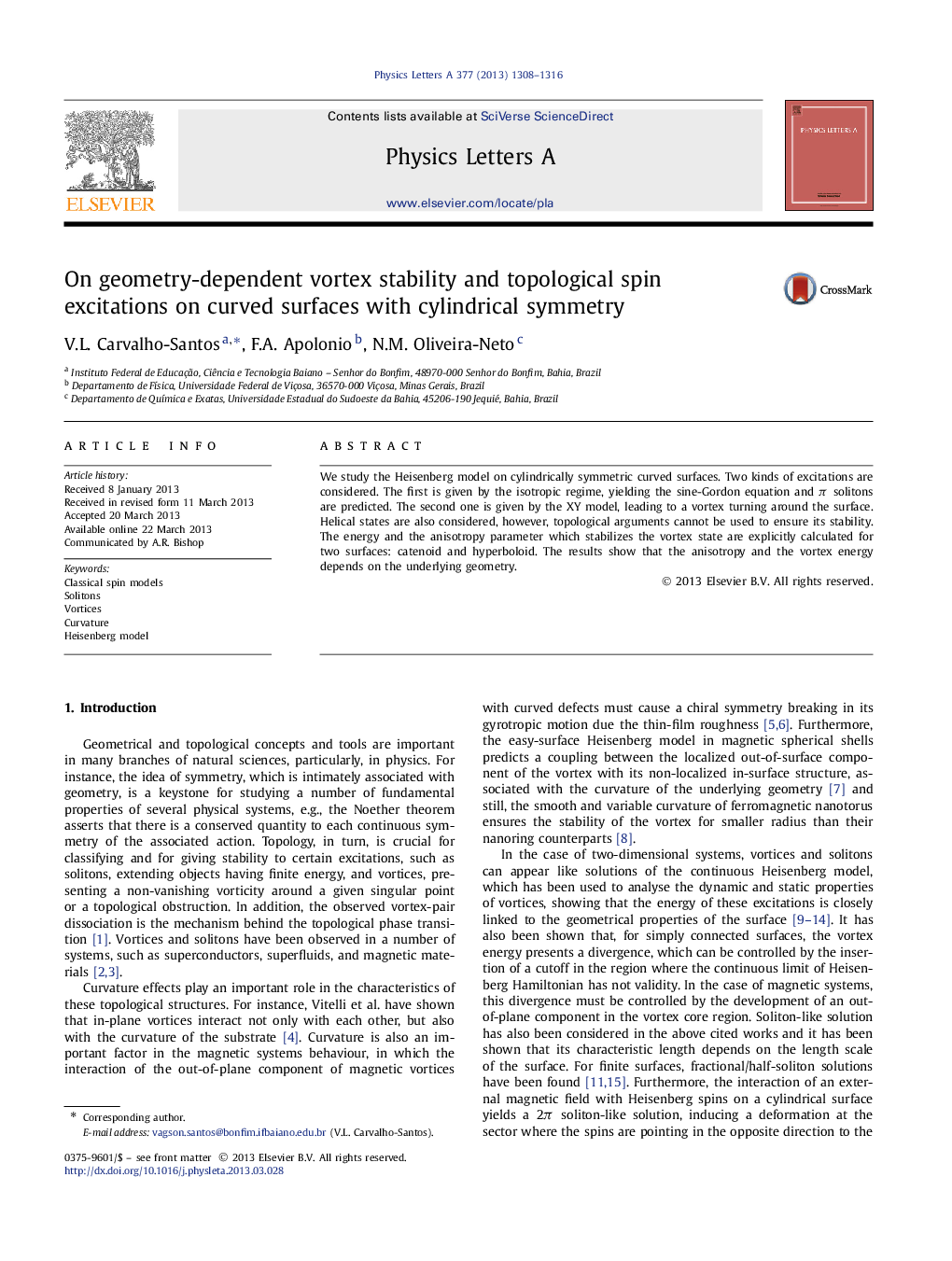| Article ID | Journal | Published Year | Pages | File Type |
|---|---|---|---|---|
| 10727391 | Physics Letters A | 2013 | 9 Pages |
Abstract
We study the Heisenberg model on cylindrically symmetric curved surfaces. Two kinds of excitations are considered. The first is given by the isotropic regime, yielding the sine-Gordon equation and Ï solitons are predicted. The second one is given by the XY model, leading to a vortex turning around the surface. Helical states are also considered, however, topological arguments cannot be used to ensure its stability. The energy and the anisotropy parameter which stabilizes the vortex state are explicitly calculated for two surfaces: catenoid and hyperboloid. The results show that the anisotropy and the vortex energy depends on the underlying geometry.
Related Topics
Physical Sciences and Engineering
Physics and Astronomy
Physics and Astronomy (General)
Authors
V.L. Carvalho-Santos, F.A. Apolonio, N.M. Oliveira-Neto,
